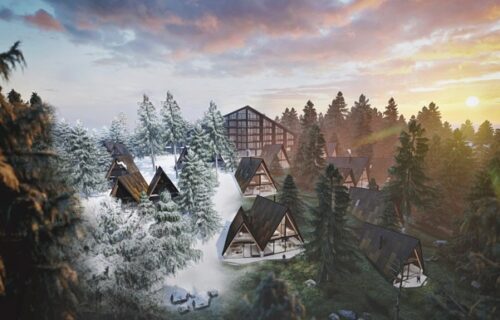Interest among Czech buyers in Alpine property continues to rise, driven by the appeal of reliable winter seasons, well-developed infrastructure and the impression of long-term stability in the market. Despite this growing enthusiasm, specialists warn that Austria regulates residential property in a way that differs substantially from what buyers may be accustomed to in Czechia. Understanding these rules is essential for anyone considering an apartment in the mountains.
Tomáš Chrobák of SUR REAL Investments, a company advising clients on Alpine real estate, explains that one of the defining features of Austrian property is that the permitted use of each unit is set in advance by local authorities. He notes that when a building is approved, the municipality determines whether the units are intended for everyday living, holiday use or structured tourist accommodation. Because of this, he advises buyers to verify the permitted use of a specific apartment before they commit to a purchase.
Although these categories exist across Austria, the level of restriction differs from one region to another. Mountain states such as Tyrol and Salzburg are known for applying some of the strictest limits, especially in popular ski destinations where local authorities wish to prevent communities from turning into “empty” resort villages. In these areas, approvals for privately used holiday apartments are extremely limited. Carinthia takes a different approach, relying more on annual charges and zoning rules than on outright limits, which makes it somewhat easier for owners who want a place for themselves. Other states, including Styria, Upper Austria and Lower Austria, tend to use a mixture of standard planning regulations and local financial measures rather than strict prohibitions. However, even in these regions the final decision always depends on the municipality and should be checked in advance.
A common misunderstanding arises when buyers expect that an apartment in an Austrian resort can be used as freely as a cottage in Czechia. This is rarely the case. Many Alpine apartments are part of managed resort complexes and are intended to operate as short-stay accommodation for visitors. Owners are given a limited number of weeks per year for private visits, and the rest of the time the apartment must be rented out through a contracted operator. These developments often function much like hotels, with identical furnishings included in the purchase price and centralised management that handles guest stays, cleaning and maintenance. Chrobák points out that this model suits buyers who prefer not to manage bookings or upkeep themselves, as the operational responsibilities remain with the resort management.
For those who want more freedom, there are alternatives. One option is to purchase a property classified as a secondary residence. These allow the owner to use the property without imposed limits and to decide independently whether to rent it out. However, this type of home is rare, particularly in the most sought-after Alpine valleys. Another approach is to select a property where owners are free to appoint their own rental manager and negotiate the terms of personal use. This can offer more flexibility, though it still depends entirely on what the local municipality has authorised for the property.
Anyone renting out property in Austria must be prepared for administrative obligations. Owners usually have to register with local tax authorities, and depending on how the rental is structured, they may also need to deal with value-added tax. According to Chrobák, the process is manageable, especially because many Austrian tax advisers work with Czech and Slovak clients and can act on their behalf. He also notes that Austrian institutions often send letters directly to the address of the apartment rather than to the owner’s home country, which is why many investors arrange for a local adviser to handle their official correspondence.
Revenue from tourist rentals typically develops gradually. New resort projects often require two or three years before achieving stable occupancy and repeat guests. René Bertignol, developer and operator of the new Das Förstereck resort near Zell am See and Saalbach, emphasises the importance of patience. He explains that apartments in Austria should be viewed as long-term holdings rather than quick-profit opportunities. While yearly rental income is useful, it is the longer horizon—supported by strong demand in established regions—that tends to determine the overall return.
Some resort operators advertise guaranteed annual rental returns to attract buyers. Chrobák advises treating these offers carefully, noting that fixed returns are often set below what well-located properties could achieve naturally. He argues that unusually high guaranteed percentages should be approached with caution and that investors are generally better served by choosing locations with strong year-round tourism, where income depends on real occupancy rather than promotional guarantees. Long-term value growth, supported by limited supply in Alpine areas, remains an important part of the investment assessment.
Source: Tomáš Chrobák of SUR REAL Investments
